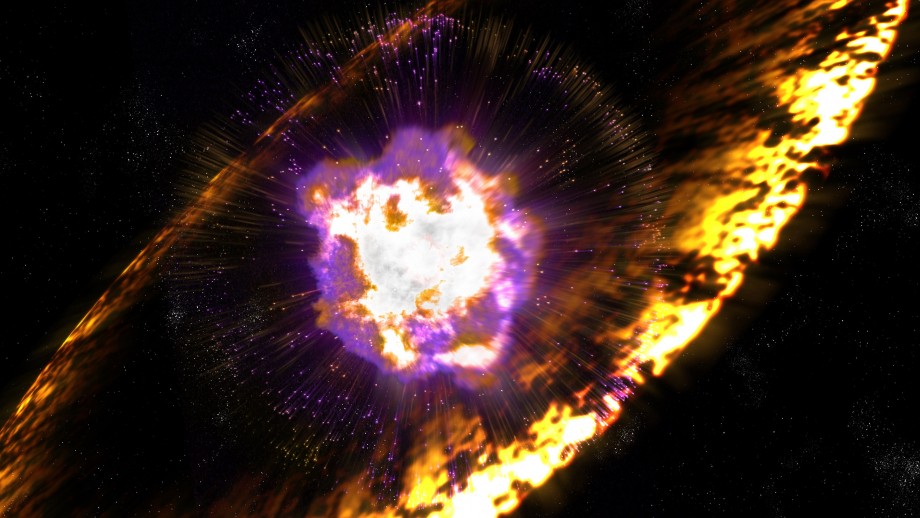On Earth, discovered radioactive debris of supernovae

An international team of scientists has found evidence that several supernova explosions occurred relatively recently from our planet, relatively close to our planet. Scientists have discovered "wreck" of stars deposited on Earth, in particular iron isotope - iron-60.
The isotope iron-60 was found both in sedimentary rocks and in samples of the Earth's crust taken in the Pacific, Atlantic and Indian oceans. It accumulated in these places from 3.2 to 1.7 million years ago.
“We were surprised at how well the fragments of stars were distributed over 1.5 million years,” says Dr. Anton Walner, a nuclear physicist at the School of Physics and Engineering at Australian State University (ASU). - This gives grounds to assume that supernovae exploded one after another, and there was a whole series of them. I wonder how this coincided with the period when the Earth cooled and changed from the Pliocene to the Pleistocene. ”
')
Isotopes related to a supernova explosion eight million years ago were also found, coinciding in time with global changes in fauna in the Miocene. Scientists believe that the supernova explosions occurred at a distance of about 300 light years - in a fairly old star cluster, the distance to which from us has increased since then. There are almost no stars left in it, which means that most of them have already exploded.
The brightness of these phenomena on Earth should have been comparable in brightness with the Moon. True, cosmic radiation, even in this case, would be too weak to directly affect the fauna of the planet. Some scientists believe that the increase in cosmic radiation could affect the cloudiness of the planet.
Iron-60 is a radioactive isotope of iron with a half-life of 2.6 million years. This is one of the heavy elements formed in the stars and spreading after their explosion. Since it reaches the Earth in extremely small quantities, scientists needed very accurate methods for detecting this isotope in rock. In the study, scientists examined 120 samples from different locations of the oceans, while the fences covered the last 11 million years of the planet.
Scientists from Australia, Austria, Israel, Japan, and Germany participated in the work .
Source: https://habr.com/ru/post/368641/
All Articles